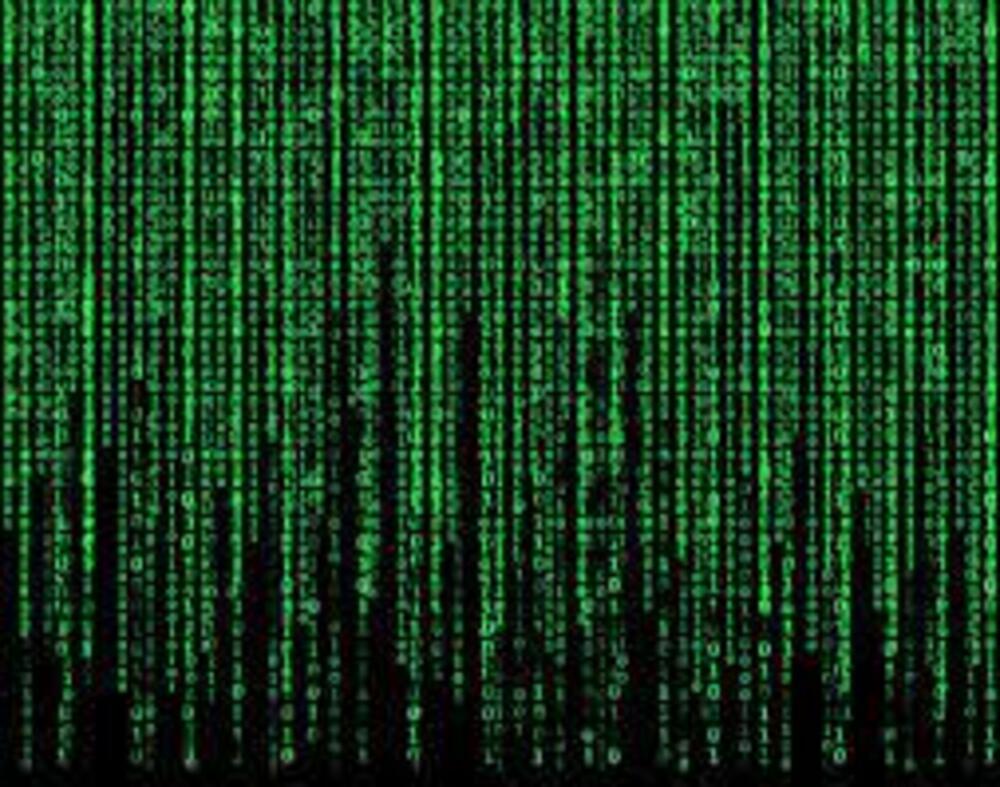This article was published as a part of the Data Science Blogathon.
Introduction
The body of knowledge and practice known as Deep Learning gives us a way to understand patterns, quantify relationships, and predict the future. Deep Learning helps us understand the world. The world is interconnected. Deep learning can show these connections and possibilities. The earlier young learners can put these skills to practice, the more likely we will remain an innovative society and economy.

The above paragraph is excerpted from an article published on the website of the Centre for Global Education of Asia Society forum. The article is actually about the importance of maths education. However, I have replaced the word “maths” in the paragraph with the word “Deep Learning”! If we substitute the word “Deep Learning” for “maths”, the paragraph (and the article) seems to make more sense!
If you are skeptical, read this full article!
Some Dehype
Before we delve into the main premise of this article, some important points:
1. Although deep learning has led to remarkable achievements, the expectations for what the field will be able to achieve in the next decade tend to run much higher than what is likely possible
2. In particular, talk of human-level general intelligence should not be taken too seriously
3. We are currently witnessing the third cycle of AI hype. It is best to moderate our expectations for the short term
4. Don’t believe in the short-term hype, but do believe in the long-term vision.
The above words of wisdom are not just mine alone. These are the words of Francois Collet from his book on Deep Learning, who is also the creator of the Keras Deep Learning library!
Deep Learning and Digitization of the World
Though Artificial General Intelligence (AGI), in terms of mimicking human-level intelligence or manifesting “consciousness,” is still a long way off, significant progress has been made in implementing deep learning systems. Some recent advancements made beyond the vanilla neural networks include Hopfield networks where each neuron is interconnected to other neurons, Boltzmann machines, a model that can learn internal representations, Self Organizing Maps, deep belief networks, autoencoders, general adversarial networks, and so on.
Transfer Learning
During an interview, I heard Sebastian Thurn (creator of deep learning models for Self-driving AI Cars and chief of Udacity Education Platform) humorously saying something like, “I have designed deep learning models that can classify malignant tumors but the surprising thing was a deep learning model based on transfer learning that can classify between cats and dogs was able to perform better in predicting malignant tumors than a basic naïve deep learning model designed for malignant diagnosis!!”. I thought he was just joking. Later, I was surprised to find that this could indeed be true! And that is the beauty, promise, and potential of Transfer Learning, a critical breakthrough in deep learning methodology.
For example, the figure below gives a set of totally unrelated images from several datasets that were used for breast cancer classification, along with the domain-based dataset (ICIAR-2018), by some researchers. Since data about breast cancer images are difficult to acquire, the main challenge in deep learning for several such medical domains, they decided to use domain transfer learning by using the widely available datasets of other images given below. They improved the accuracy to 96.1% using transfer learning on the ICIAR-2018 dataset.


Images from the Same domain of breast cancer detection
Universal Datasets for Everything
Transfer learning allows for the development of established deep learning models for standard and typical human problems by creating universal datasets, which can then be trained for more specific and completely different but related problems. As a result, an ImageNet or Resnet model can be applied to a wide range of different. Still, related use cases beyond the actual image classification it was originally trained for.
Democratizing Deep Learning
I think it is this potential and promise of transfer learning that made Francois Collet assert in his book that “to begin deploying deep-learning technology to every problem that it could solve, we need to make it accessible to as many people as possible, including non-experts—people who aren’t researchers or graduate students. For deep learning to reach its full potential, we need to democratize it radically”
We can envisage a future where there would exist several large public datasets that are universal (applicable across the world like Google engine or ImageNet dataset) along with some complex and advanced deep learning models trained on those universal datasets (e.g., EfficientNet trained on ImageNet) to solve almost every human problem that requires decision making based on data. For example, suppose you want a second opinion on your X-ray about a chest problem. A simple app on your mobile phone that can apply a deep learning model built on a universal X-ray image dataset can do the trick! Or you can simply feed your annual health check report and get a medical opinion from a deep learning medical diagnosis model!
Digitizing the World
If you extend this concept further, the data science and AI community may need to embark on the task of creating such universal datasets on almost everything in this world – practically, it will amount to digitizing all the worldly objects (“names and forms”), and then building advanced deep learning models trained on those datasets for all kind of generic problems which can be better solved through publicly available data.
Both are inconceivable for any person, business, or organization to accomplish independently. Such universal datasets and related complex deep learning models must be created by a worldwide AI and machine learning community working together. As a result, such models can be freely used by anybody!
Francois Collet had this insight when he said that deep learning and AI must be democratized.
Deep Learning Breakthroughs
For the sake of completion and for those new to the field of deep learning, this section lists some of the major advancements and applications made in the field of deep learning:
1. Health care and drug discovery
Drug discovery and healthcare are two areas where deep learning has made huge strides. Deep learning models can greatly enhance patient monitoring and diagnosis based on patient data, health records, and medical reports. This includes classification tasks like identifying minute deviations in medical image data, classifying patients into cohorts based on risk factors, or emphasizing associations between symptoms and outcomes in significant amounts of unstructured data. Deep Learning models created by Deep Mind can predict protein structure, aiding in a deeper understanding of diseases and the search for new drugs. The models can also predict the most efficient RNA sequences for developing novel vaccines and medications.
Some Examples:
- According to a study published in the Annals of Oncology, a deep learning tool identified melanoma in dermoscopic images more accurately than dermatologists. The convolutional neural network (CNN) outperformed human experts in specificity, indicating that deep learning could provide dermatologists with valuable clinical decision support.
- Drugs can only be effective if they bind to their target proteins in the body. Assessing stickiness is an important step in the drug discovery and screening process. DeepBAR is a new technique that quickly calculates the binding affinities between drug candidates and their targets. Compared to previous state-of-the-art methods, the approach produces precise calculations in a fraction of the time. DeepBAR, according to the researchers, could one day accelerate drug discovery and protein engineering.
2. Language Models
AI systems can now write persuasive content, fluently communicate with people, and can answer inquiries. There are currently efforts to create models with combined vision, speech, and language abilities. Several of these models can create sections of writing that are frequently indistinguishable from human-generated content, including news articles, poems, novels, and even computer code, by piecing together plausible sequences of words. Deep learning models can produce software to write songs and poetry, classify and categorize research papers, compose music, and write programs to solve college-level mathematical problems. Human needs only constrain these data-driven applications.
Some Examples:
- Roche is the world’s leading in-vitro diagnostics company, and its medicines are used to treat more than 130 million people each year. It is developing a portfolio of clinical decision support products, beginning with oncology. Roche uses Spark NLP for healthcare to extract clinical facts from pathology reports and radiology – and to make training, optimization, and inference of such domain-specific models more efficient at scale.
3. Virtual assistance, security, and surveillance technologies
Real-time object-detection systems are used frequently for crowd surveillance and are crucial for mobile robotics, especially self-driving cars. These systems identify important things as soon as they appear in a picture. For example, facial recognition technology has been widely employed in China for anything from security to payment.
Some Examples:
- The Avenue Charles-de-Gaulle (RN13), an urban expressway in Neuilly-sur-Seine, France, is home to about 130,000 vehicles daily, ranging from little cars to big buses and lorries. Reliable traffic data are required to quantify the potential negative impacts on motorists and their safety as well as to plan for traffic diversions and the potential impact on regular commuters. Wintics Cityvision software installed in Neuilly-sur-Seine analyses video streams from 5 Hikvision thermal cameras. Cityvision uses artificial intelligence to measure, analyze, and visualize traffic data from the boulevard, assisting in measuring the state and type of traffic and how and when people use the 10 traffic lanes.

5. Robotics
Intelligent robots have advanced steadily over the previous five years thanks to machine learning, robust processing and networking capabilities, and improved accessibility to sophisticated sensor systems. Even though the physical limitations of the settings prevent these systems from completely utilizing all AI advancements, extremely agile and dynamic robotics systems are now readily available for domestic and industrial applications. In industrial robotics, manipulator-type robots—those that pick up things instead of rolling across the floor—can pick up randomly placed overlapping objects at realistic speeds for real-world applications. This is made possible by the adoption of deep-learning-based vision systems.
Some Examples:
- Amazon Robotics creates cutting-edge machinery and software to improve efficiency in Amazon fulfillment centers. Amazon Robotics automates the inventory flow in Amazon fulfillment centers with its software and machinery. The company’s system comprises three major physical components: mobile shelving units, robots, and employee workstations. The robots deliver mobile shelving units to stations, and employees either stock or remove inventory (picking).
6. Mobility
One of the most popular robotics applications in recent years has been autonomous or self-driving vehicles, which have implications for both urban planning and the entire automotive industry. Technologies like sensor fusion, AI planning and decision-making, vehicle dynamics prediction, on-the-fly rerouting, inter-vehicle communication, and other similar technologies are all integrated into the architecture of self-driving cars. The driver assistance systems in manufactured cars will be ubiquitous in the coming years, powered by deep learning models. These systems provide adaptive cruise control to safely change speed and lane-keeping assistance to keep vehicles centered on the road using sensors and AI-based analysis.
7. Finance
AI is being increasingly used in the finance and banking sector. Deep learning models have significantly altered and enriched the traditional lending and credit scoring models and can now partially automate loan decisions for several lenders. These modern systems use a variety of consumer information that is not typically used in traditional credit scoring models. This strategy has the potential to expand credit to new demographic groups in some situations while also having the potential to compel individuals to accept particular social norms.
Some Examples:
- Capital One has many new opportunities to customize its users’ experiences, gain more insight into customer engagement, and help inform key business decisions by using data analytics and machine learning on AWS. This is also true in the bank’s call centers, which use speech recognition technology in an automated training and validation system that has nearly doubled accuracy in the last 18 months.
8. Recommender systems
Recommender systems that automatically prioritize what we see online have become crucial due to the abundance of information at our disposal. Such systems have always been strongly reliant on AI, and today they significantly impact how people consume goods, services, and content—including news, music, movies, and more. Aside from a general increase in online activity and commerce, recommender systems’ underlying AI technologies have significantly changed in the previous five years.
All the above can be categorized in terms of giving senses and intelligence to machines so that computer systems can more effectively perform repetitive human activities in a better way.
The above advancements can fulfill the primary vision – the “AI Vision” of Deep Learning.
This article focuses on something different and a newer dimension of application. It rests on some fundamental premises on the existence of abstract ideas behind worldly objects and the application of mathematics to define them. It starts where the previous vision achieves its purpose leading to the digitization of everything in the world.
Ancient Mathematics
Mathematics, according to the ancient Greek mathematicians, is a field that allows us to understand the metaphysical concepts of the world. They believed that numbers possessed a divine quality. They believed that it transcends physical space and time and that numbers are meaningfully eternal. A weakened version of this theory gave rise to what was later now known as “Platonism.”
Platonism in mathematics is a metaphysical belief that abstract mathematical objects exist independently of our language, thoughts, and behaviors. Platonists such as Aristotle and Plato believed that mathematical numbers exist independently of our physical existence, just as stars do in the cosmos. They thought these abstract mathematical numbers and concepts would exist even if we or our minds did not exist.
These mathematicians in ancient times were also philosophers. They attempted to explain the world using mathematics. This quest led to some fundamental discoveries, such as the Pythagoras theorem. Here is an example
Metaphysical Ideas and Mathematics
The ancient Greeks believed in the duality of existence (as opposed to Hindus’ Oneness theory of Advaita Vedanta). They attempted to categorize everything in the world in a dualistic way. For example, this world is supposed to be made up of only two kinds of things: ‘unlimited’ and ‘limiting.’ Though both are inherently unlimited, the purpose of ‘limiting’ is to ‘limit’ the ‘unlimited.’ The entire world was supposed to operate between and because of these forces. Many mathematical concepts were developed to support this viewpoint. But how can something that is ‘limiting’ also be ‘unlimited’?
This question eventually gave rise to the now-important component of modern mathematics known as Set Theory! Georg Cantor (19th Century), a German mathematician and philosopher, investigated this philosophical question and concluded with a novel idea that there can be ‘different sizes infinity’ and that God alone is ‘absolute infinity’! His mathematical and philosophical conclusions were so radical and against established religious tenets that it gave rise to so much opposition that he became nearly insane with bipolar disorder, unable to withstand the criticisms in his later years! Owing to his contributions to the Set Theory, the Sylvester Medal, the greatest accolade the Royal Society can bestow for contributions to mathematics, was given to Cantor in 1904 by the Royal Society.
What exists independent of “Names and Forms”?
Despite the intuition of ancient philosophers about the relationship between numbers and metaphysical concepts, platonism made the mistake of believing that it is numbers that exist independently of physical objects and only need to be discovered to understand the world. In reality, it is not numbers that exist outside of physical realms. According to some theosophical works, there are metaphysical ideas and concepts that exist independently of worldly objects, and worldly objects represent them. It is these metaphysical concepts that Greek Philosophers must have alluded to. These metaphysical concepts can be reduced to numbers as their conclusion. They further concluded that by reducing these into numbers, the world could be better understood
According to ancient Hindu scriptures, this world is nothing more than “names” and “forms.” It is believed that metaphysical concepts and ideas exist beyond these names and forms. To put it another way, this world of names and forms represents abstract metaphysical ideas and concepts. These names and forms, according to Hindus, are just physical manifestations of something eternal. Even if the physical realm is destroyed, the invisible aspects of the realm or the thing represented by the physical realm will exist indefinitely.
Ancient mathematicians intuitively understood this concept. They declared that regardless of the existence of the physical realm, the metaphysical realm would exist eternally. Instead of accepting and delving into the existence of invisible realms of abstract concepts, they referred to the existence of mathematical abstracts and concepts denoted by numbers!
Combining these two theories – that there is eternal existence of metaphysical ideas and concepts beyond the physical realm of names and forms and that there is eternal existence of numbers that denote abstract philosophical concepts that can be ‘discovered’ – we can arrive at the more revolutionary idea that the entire world of names and forms can be reduced to mathematical numbers since numbers can represent the metaphysical ideas.
In other words, the entire world of names and forms can be reduced to numbers!
Metaphysical Abstract Concepts and Ideas
As per the above theory, every name and form represents an idea. A man, for example, is an idea, as is a woman. Other existences, such as a cat, dog, or tree, represent other metaphysical ideas. These metaphysical concepts and ideas help to build the physical world.
To illustrate, in image processing, we reduce images to numbers. A matrix of certain numbers can represent a cat and a dog. This is nothing more than the conversion of image pixels into numbers. Similarly, language sentences can be converted into numbers through text vectorization and embeddings. In the same way, a man has certain attributes that define his existence in this world, distinct from the existence of a woman. I am not referring to physical appearance in images but attributes of what constitutes a man or woman. These attributes are the feature sets that define each of these worldly objects. And similar to word embeddings, these feature sets constituting each material object can be reduced matrix of numbers.
Unlike image classification, which is the primary AI vision of Deep Learning, here, the task does not stop with converting each object into a set of matrices. Still, here the primary objective is to understand the relationships and patterns between existences. In other words, the input is not a dataset consisting of many samples of a single object or a few classes for differentiation. Here the objective is to understand the relationship between several objects. For example, we feed several reviews of different products or movies for sentiment analysis. Each sentence is a different object and the relationship studied is the sentiment expressed by each of these sentence objects. In a similar way, we can study the common thread of relationships between various objects represented by names and forms.
Because all existences consisting of names and forms can be reduced to metaphysical abstract ideas with meanings, they are all inextricably linked. An idea cannot exist in isolation, and its existence must be relative. We can better understand the meaning and purpose of an object’s existence if we understand its metaphysical abstract idea. By studying the metaphysical ideas underlying names and forms and the way they are related, the purpose and meaning of the entire world of names and forms can be better understood.
In fact, when languages are created, the words are generally not created at random. The choice of letters to represent an object through a name in the world will somehow be related to the idea behind that object. If a language is really constructed this way, we can get tremendous insights by simply using the NLP kind of model. Even if this is not true, we can achieve the same by understanding the relationships between them, even if the numbers themselves represented through the language do not convey the idea.
Greek philosophers believed that studying the mathematical dimension of existence was the way forward. They reasoned that because all ideas are related, if we can represent these metaphysical ideas and objects with numbers, we can better study their meaning and interrelationships! Believe it or not, this concept that originated with Greek philosophers is the fundamental premise of the field of mathematics itself!!
Digitized World – World in terms of Numbers
According to the above theory, the entire world can be reduced to numbers and equations that show relationships between these numbers (remember the Matrix movie?). A collection of vectors or matrices can represent each object. The relationships between these numbers can be studied to understand better the abstract ideas that underpin them.
The human language is the first step in understanding this world of names and forms. The language is used to name the form and describe it. Before we can reduce this world of forms to numbers, we must first reduce this world of forms to names! We cannot deal with any object in this world unless it has a name. That is the purpose of language – they reduce the world into alphabets.
Since, through a language, everything in this world has already been reduced to language alphabets, we simply need to assign numbers to these alphabets. We can reduce the world to mathematical numbers if we convert these language representations of forms and their relationships into numbers! This is similar to what Natural Language Processing (NLP) in Deep Learning does!
NLP and Deep Learning
Now having read the previous paragraphs, read the first paragraph of this article again! Does it make sense now? That is the beauty of Deep Learning!
Deep learning is a field in which everything must first be converted into numbers in order to make sense! For example, to classify images, you must first convert or represent each image in terms of some matrices, called text vectorization and embeddings. If you want to analyze speech, you must first convert each sound bit into a set of matrices of numbers.
Deep learning, thus, is the field in which names and forms are converted into numbers so that the relationships between them can be studied.
As long as you can reduce worldly objects to numbers, and as long as there are some relationships between those objects (which is what Greek Philosophers have already postulated), Deep Learning algorithms can reveal those relationships!
The idea for this article came to me while I was studying the concept of embeddings in NLP. Text vectorization and text embeddings can convert characters and words to numbers and infer the relationships between them. Because the purpose of language is to describe and make sense of the world, there are inherent relationships between them, already built into it, that must necessarily reflect the abstract metaphysical ideas and concepts that underpin these objects.
As a result, if it is true that metaphysical abstract conceptual ideas exist behind every name and form of this visible world, we now know how to reduce them to numbers and deduce the ideas behind and relationships between them! This, I believe, could be another dimension of vision for Deep Learning!
Conclusion
The primary vision of Deep Learning is the well-known AI Vision – that of giving artificial intelligence to machines and systems. This is likely to lead to a generation of numerous and huge public datasets that digitize almost everything we use for a normal life, along with complex deep learning neural network models that are trained on them for solving generic everyday human problems that can be solved through empirical data.
This huge task cannot be achieved by any single individual or corporate but should be a community effort similar to the open source phenomenon. This belief and vision have led to the call for democratization of AI and Deep learning as it requires maximum contribution from people from all fields.
This article explores the promise and potential of Deep Learning from another perspective of Mathematical vision. Ancient mathematicians were also philosophers who believed an abstract metaphysical concept or idea exists behind every visible name and form in this world. And that these abstract concepts or ideas can be reduced to numbers. By reducing all the names and forms into numbers, more in-depth insights can be achieved in understanding the relationships between them and the ideas behind the construction of the world itself.
Deep Learning works by converting everything into numbers, allowing studying the relationships between them. In this respect, deep learning seems synonymous with the premise held by ancient mathematics. However, it is to be seen how much this concept of the existence of abstract ideas behind names and forms is true and how this conversion into numbers can better understand this world of names and forms.
The media shown in this article is not owned by Analytics Vidhya and is used at the Author’s discretion.




